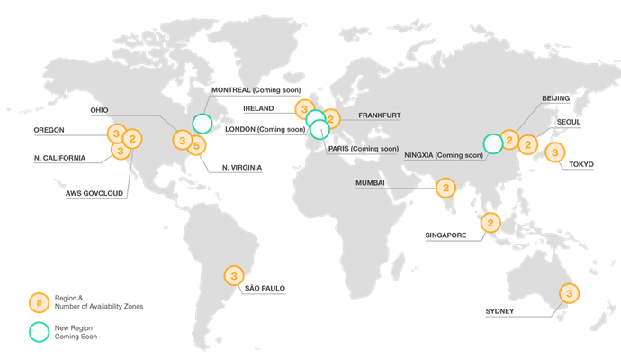TORONTO – As earlier reported, AWS Canada took the wraps off its new region in Montreal today. The region is officially called AWS Canada (Central) Region.
Regions are Amazon Web Services’ way of describing its own data centre model. For AWS, regions are a cluster of data centres in a specific area. The Montreal region for AWS Canada will be part of 15 other areas around the world. The AWS Cloud operates 40 Availability Zones within these 15 regions.
Montreal is AWS’s first region outside the U.S. but within North America. The company has five other regions in the U.S. located in 14 cities. Those 14 cities also include 21 Edge facilities.
CDN was unable to confirm how many data centres will make up the Montreal region. One thing the Montreal region will be able to do is run a hybrid environment.
For Eric Gales, AWS Canada’s GM, the new region is part of a much larger footprint he and his team is building in the Canadian market.
“We’ve been operating in Canada for 10 years and we have thousands of customers deploying more and more resources. And, so to build out our Canadian presence we now have a full array of resources such as sales support, marketing and partner network,” Gales said.
Gales added, the AWS region is not just one data centre. It consists of two availability zones which has one or more data centres in each. These data centres are discrete from each other and are powered by different grids. This ensures inherent redundancy. “Our model is for continuous availability and not just failover. So there are multiple data centres in one region,” Gales said.
Availability Zones offer the ability to operate production applications and databases which are more highly available, fault tolerant and scalable than would be possible from a single data centre. Availability Zones are connected to each other through private fiber-optic networking.
One of the strategies Gales is employing with this new AWS region is that customers are seeing compute and aligning it with the IT budget and spending on need.
“There is no commitment when you sign up with AWS. You turn on the power and you pay. Use some capacity and pay. Don’t use it; don’t pay. You can fail fast with AWS and have the flexibility to try things out cheaply,” Gales said.
The region in Montreal will be open to the channel. AWS Canada wants to grow its base and is also planning on investing in channel training and marketing for both consulting partners and regional partners.
“The launch of the region makes the market bigger for partners. Partners can now do a range of services such as consulting and managed services. This will help them grow their customer base by enabling them to provide training and re-platforming applications for the cloud,” Gales said.
Jarrod Levitan, chief cloud officer for AWS Canada solution provider TriNumbus of Vancouver, called the opening of the Montreal region “meaningful.”
“This is going to be huge. There was so much pent up resistance before. Now the floodgates are going to open. Larger enterprise companies will now go on (the cloud),” he said.
Levitan expects to see a significant uptick in cloud adoption in the next three months because of the Montreal region, which will lead into a large scale movement where enterprise customers will shift large volumes of data by the end of 2017.
In terms of vendor alliance partners, Box and Salesforce has signed up to the AWS Canada Central region.
AWS has chosen to expand in this area for business, technical and data sovereignty reasons. The Seattle-based cloud giant said customers want to have apps and data living in the specific country of origin, especially government agencies.
Lena Trudeau, head of public sector, Canada for AWS, told CDN the regions provide a big difference politically. Canada has regulatory and emotional reasons for having its data in Canada. There were some limitations with cloud adoption because of it in certain customer segments such as public sector. “AWS is very customer driven and the opportunity to bring on this region we are fulfilling this goal in sectors such as education, healthcare, financial services and the government. Now they have the opportunity to take advantage of the AWS cloud. It’s going to be a game changer,” she said.
AWS World Regions
Why Montreal?
Well there are a lot of data centres located in the province of Quebec. Gales says for AWS it was a matter of network capacity requirements. The area had an abundance of power and the province was committed to a long term renewable resource strategy. AWS Canada wants to be carbon neutral and the hydro power in Quebec enables the company to have room to grow in the territory.
The Montreal region is also part of a global AWS infrastructure expansion that will eventually include seven Availability Zones and three regions in the U.K., France, and China, planned for early 2017.








